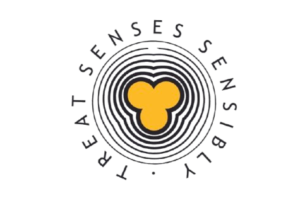Obstructive Sleep Apnoea (OSA) is a sleep disorder involving the stopping or significant reduction in airflow while breathing during sleep. It is the most common type of sleep-disordered breathing, characterized by recurrent episodes of upper airway collapse during sleep.
There are three main types of sleep apnoea, i.e., Obstructive Sleep Apnoea, Central Sleep Apnoea and Complex Sleep Apnoea Syndrome.
When should you see a doctor?
Usually, patients with OSA do not notice any symptoms early on. It is quite common for symptoms to present after years and usually involve:
- Loud, habitual snoring.
- Episodes in which you stop breathing during sleep
- Gasping and choking feeling that often awakens patients from sleep
- Insomnia, restless sleep
- Excessive daytime sleepiness
- Morning headaches
- Lack of attention throughout the day
- Irritability
People of all ages can suffer from sleep apnoea, including babies and children. However, overweight patients over 50 tend to be more susceptible.
Certain clinical features and physical traits are common in patients suffering from OSA. They include:
- Excessive weight
- Large neck
- Structural abnormalities that reduce the diameter of the upper airway (nasal obstruction, enlarged tonsils, low-hanging soft palate, etc.).
What causes Obstructive Sleep Apnoea?
Obstructive Sleep Apnoea is the most common of all the sleep apnoeas. It happens when the throat muscles at the back of the throat relax. These muscles support the soft palate, triangular tissue hanging from the soft palate (uvula), tonsils, the sidewalls of the throat and the tongue.
When these muscles relax, the airway narrows or closes as you breathe in. You don’t get enough air, lowering the level of oxygen in your blood. The brain senses your inability to breathe and wakes you up from sleep which then allows the airway to reopen. Waking up happens so briefly that you don’t remember it.
Choking, snorting or gasping could repeat itself five to thirty times or more each hour through the night, every night. This impairs your ability to reach the deep, restful phases of sleep.
How is sleep apnoea diagnosed?
If your doctor feels you may be presenting symptoms of sleep apnoea, he may advise an overnight sleep study. This allows your doctor to objectively evaluate for sleep apnoea.
A Sleep Study is advised for patients suspected to be suffering from sleep apnoea. For adults, this test can be performed in the comfort of their homes. On the other hand, children and babies must be taken to a sleep lab to be evaluated.
How is sleep apnoea treated?
Treatment for sleep apnoea is of three kinds, i.e. Conservative management, Mechanical Therapy and Surgery.
- Conservative management
- Weight loss- Overweight patients can benefit from losing weight. However, losing weight can be challenging due to increased appetite and metabolic changes that occur with obstructive sleep apnoea.
- Avoid alcohol and certain sleeping pills- These could make the airway more prone to collapse during sleep.
- Sleep on your side- For some patients with mild OSA, breathing pauses only occur while they are on their backs. Hence, such patients use a pillow wedge or other such device that helps keep them in a side position.
- Use of nasal sprays or breathing strips- Patients suffering from nasal congestion or sinus problems should use breathing strips or nasal sprays.
- Avoid sleep deprivation- All OSA patients must ensure that they get proper rest and sleep.
- Mechanical Therapy: Positive Airway Pressure (PAP) Therapy is the preferred treatment for most OSA patients. Patients wear a mask over their nose or mouth. Air is gently blown, forcing it through the nose or mouth. Pressure is kept under control ensuring the upper airway tissues do not collapse during sleep. It is important to note that PAP therapy prevents airway closure while in use. If it is stopped or is not being used properly, sleep apnoea episodes will return.
- Continuous Positive Airway Pressure (CPAP) is the most common PAP device used by OSA patients. The device is set at a single pressure.
- Surgery: Surgery serves two purposes, i.e. it helps OSA patients and other who snore but do not suffer from OSA. Surgery is for patients who have malformed or excessive tissue obstructing airflow in the throat or nose. Some of these include enlarged tonsils, deviated nasal septum or a small lower jaw with an overbite causing the throat to be narrow. Surgery is usually performed only after conservative management and CPAP have failed to help the patient.
- Tonsillectomy- A surgery where the tonsils are removed from the back of the throat. It is a common cause of obstruction in children.
- Uvulopalatopharyngoplasty (UPPP)- A surgery where soft tissue on the back of the throat and palate is removed. This increases the width of the airway at the throat opening.
- Nasal surgery- Surgeries where nasal deformities and obstructions are corrected, resulting in better breathing. Examples include septoplasty, turbinectomy, ect.
- Mandibular/ maxillary advancement surgery- Surgeries where certain throat obstructions or facial abnormalities are corrected. These are invasive procedures that are only performed on patients with severe OSA with head-face abnormalities.
What are the effects of sleep apnoea?
If untreated, sleep apnoea can cause several health problems like diabetes, obesity, hypertension, stroke, irregular heart rhythm (arrhythmia), enlargement of the heart muscle (cardiomyopathy), heart failure and even heart attacks.
It causes heart problems because if you have sleep apnoea, you tend to have higher blood pressure. This could be due to:
- Recurrent episodes of low oxygen (Hypoxia)
- Fluctuations in carbon dioxide levels
- Direct impact on the heart caused by pressure changes in the chest
- Higher levels of markers of inflammation
With a higher prevalence of sleep apnoea in cases of heart failure and cardiac arrhythmias, you must get treated at the earliest.
